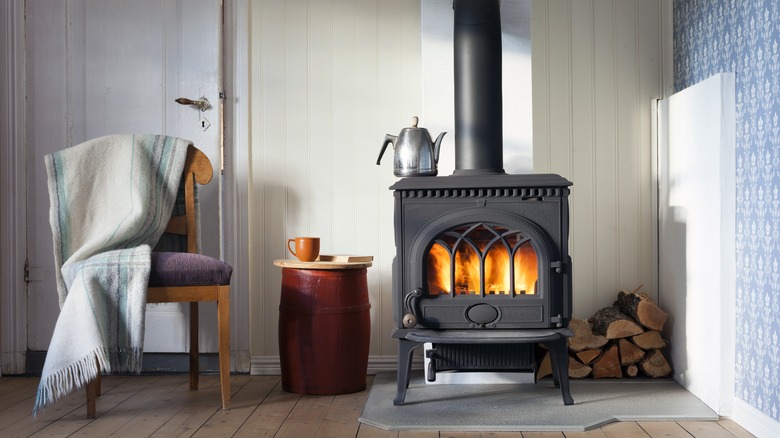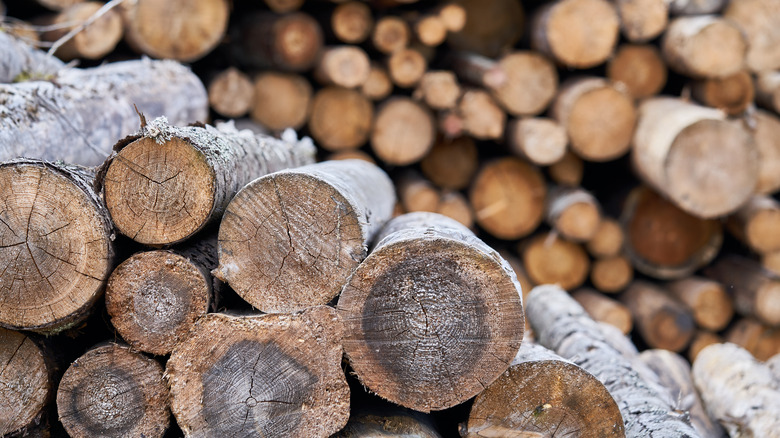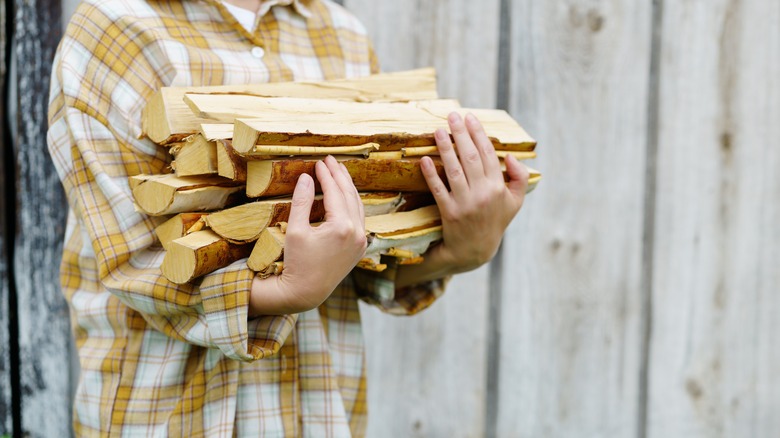How To Select The Best Firewood For Your Wood Stove
While fireplaces are a beautiful addition to any home, wood stoves are much more efficient at heating, according to The Firebird. A wood-burning fireplace is only 25% capable of heating a space, while a wood stove provides around 80% competence. With the cost of firewood constantly on the rise, a wood stove certainly gives you more bang for your buck, and you still have the soothing comfort of seeing that roaring fire as it warms your home. You can even get the best of both worlds by installing a wood fireplace insert to improve heating efficiency while keeping the beauty of our mantelpiece.
Regardless of the kind of stove you have, it is important to know what to look for when you are buying wood. You should never burn some types of wood in a fireplace because of specific compounds that can pollute the air quality in your home or cause excessive creosote build-up. As the cold days approach, here are some signs to look for and some to avoid to ensure you get safe firewood that burns well.
Signs of good firewood
If you are buying a large amount of firewood, you may want to have it delivered and stacked, which usually requires an additional fee. However, just because you are having firewood delivered does not mean you can't inspect it before they get it to you. If the person selling firewood will not allow you to check the wood before buying, you may want to find another trader. This could be a sign that the vendor is not entirely reputable.
One of the most important features of good firewood is that it is seasoned, so you want wood that is six months to a year old, states Northeastern Chimney. Seasoned wood has less moisture than unseasoned wood, making it easier to burn while producing less smoke. A good wood seller will also be able to tell you exactly what kind you are buying. For example, white and red oaks are hardwoods that provide a lot of heat. Other good options are hard maple, hickory, and pecan.
Wood qualities to avoid
It can be difficult to tell if firewood is fully seasoned, states the University of New Hampshire. If the seller states it is, ask how long it has been since it was cut. You can also check the wood yourself by judging its weight. Unseasoned wood has more moisture and is heavier than seasoned wood. If unsure, purchase a wood moisture meter and look for results with 20% or less moisture. Any more than that can result in dangerous creosote build-up in your chimney, which is a firetrap.
Avoid any wood that has been painted, stained, or treated in any way, as burning these types of materials can release dangerous chemicals into the air. Don't Move Firewood recommends only burning wood that you can be entirely sure has never been when any chemicals. For example, old pallets may seem like an efficient and inexpensive source of firewood, but they are often treated with arsenic and methyl bromide. Only burn wood that you purchase from a reputable seller.


